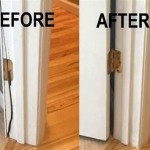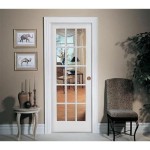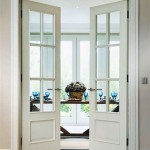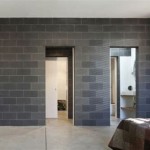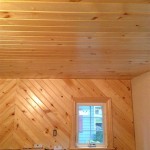```html
Modern Home Interior Decoration Ideas
Modern home interior decoration emphasizes clean lines, functionality, and a sophisticated aesthetic. It's a style that prioritizes space, light, and a sense of calm. Unlike more ornate or traditional styles, modern design focuses on essential elements, creating a harmonious and uncluttered living environment. Understanding the key principles of modern design is crucial for achieving a cohesive and visually appealing space. This article explores various aspects of modern interior decoration, offering practical ideas and insights for transforming a house into a stylish and comfortable modern home.
The term "modern" in interior design often refers to a specific period, typically from the early to mid-20th century. However, in contemporary use, "modern" encompasses a broader range of styles that share core characteristics, including minimalism, geometric forms, and the use of natural materials. It's important to distinguish between modern and contemporary design. While contemporary design is constantly evolving to reflect current trends, modern design draws inspiration from a more defined historical period.
Embracing Minimalism and Decluttering
One of the foundational elements of modern interior decoration is minimalism. This principle encourages a focus on essential items and the elimination of unnecessary clutter. A minimalist approach not only creates a visually appealing aesthetic but also promotes a more peaceful and organized living space. Decluttering involves removing items that no longer serve a purpose or contribute to the overall design. This can be achieved through regular purging, strategic storage solutions, and a conscious effort to avoid accumulating unnecessary possessions.
When decluttering, consider the function and aesthetic value of each item. Ask yourself if the item is truly needed or if it simply occupies space. Items that are no longer needed can be donated, sold, or discarded responsibly. Storage solutions are essential for maintaining a minimalist aesthetic. Invest in storage containers, shelving units, and furniture with built-in storage to keep items organized and out of sight. Consider vertical storage options to maximize space, especially in smaller homes or apartments.
Minimalism extends beyond simply removing items. It also involves carefully selecting furniture and décor that are both functional and aesthetically pleasing. Choose pieces that have clean lines, simple shapes, and a neutral color palette. Avoid ornate details or excessive embellishments. Quality over quantity is a key principle of minimalist design. Invest in fewer, high-quality items that will last longer and contribute to the overall aesthetic.
Lighting plays a crucial role in highlighting a minimalist space. Natural light is preferred, but artificial lighting should be carefully considered. Use a combination of ambient, task, and accent lighting to create a warm and inviting atmosphere. Avoid harsh or overly bright lighting, which can detract from the sense of calm and serenity.
Utilizing Neutral Color Palettes and Natural Materials
Neutral color palettes are a hallmark of modern interior decoration. Colors such as white, gray, beige, and black provide a versatile foundation for creating a sophisticated and timeless aesthetic. Neutral colors create a sense of calm and spaciousness, making them ideal for smaller homes or apartments. They also allow for the incorporation of pops of color through accessories and artwork.
While neutral colors are dominant, they don't have to be monotonous. Different shades and textures of neutral colors can be used to create depth and visual interest. For example, a combination of white, cream, and beige can create a warm and inviting atmosphere. Gray can be used in various shades, from light and airy to dark and dramatic. Black can be used as an accent color to add contrast and sophistication.
The integration of natural materials is another key element of modern design. Wood, stone, glass, and metal are commonly used to create a sense of warmth and texture. Wood can be used for flooring, furniture, and accent walls. Stone can be used for countertops, fireplaces, and flooring. Glass can be used for windows, doors, and decorative elements. Metal can be used for furniture frames, lighting fixtures, and hardware.
When using natural materials, it's important to consider their texture and finish. Rough textures can add a rustic touch, while smooth textures can create a more refined look. The finish of the material can also affect the overall aesthetic. Matte finishes tend to be more understated, while glossy finishes can add a touch of glamour. Sustainability is also an important consideration when choosing natural materials. Opt for sustainably sourced wood and recycled materials whenever possible.
Plants can also be used to add a touch of nature to a modern interior. Greenery can soften the stark lines of modern design and create a more welcoming atmosphere. Choose plants that are easy to care for and that complement the overall aesthetic. Consider using minimalist planters to maintain the clean lines of modern design.
Incorporating Geometric Shapes and Clean Lines
Geometric shapes and clean lines are fundamental to modern interior decoration. These elements contribute to the overall sense of order and simplicity that characterizes the style. Furniture, lighting fixtures, and decorative elements often feature geometric shapes such as squares, rectangles, circles, and triangles. These shapes are used in a deliberate and balanced manner to create a visually appealing composition.
Clean lines are evident in the architecture of modern homes, as well as in the furniture and décor. Straight lines and sharp angles are preferred over curves and ornamentation. This emphasis on simplicity and clarity creates a sense of order and functionality. Furniture with clean lines and minimalist silhouettes is essential for achieving a modern aesthetic. Avoid furniture with ornate details or excessive embellishments.
The arrangement of furniture and décor is also important. Furniture should be arranged in a way that promotes functionality and flow. Avoid overcrowding a room with too much furniture. Instead, focus on creating a comfortable and inviting space with a few carefully selected pieces. Artwork and accessories should be chosen carefully to complement the overall design. Opt for pieces that have a strong geometric form or clean lines.
Lighting fixtures can also be used to incorporate geometric shapes and clean lines. Pendant lights, floor lamps, and table lamps are available in a variety of geometric designs. Choose fixtures that complement the overall aesthetic and provide adequate lighting for the space. Consider using LED bulbs, which are energy-efficient and provide a clean, bright light.
Textiles can also play a role in incorporating geometric shapes and clean lines. Choose fabrics with geometric patterns or simple textures. Avoid fabrics with ornate patterns or excessive embellishments. Solid colors and subtle textures are often preferred in modern design. Rugs can also be used to add a touch of geometric interest to a room. Choose rugs with geometric patterns or simple textures that complement the overall aesthetic.
Ultimately, modern home interior decoration is about creating a space that is both functional and aesthetically pleasing. By embracing minimalism, utilizing neutral color palettes and natural materials, and incorporating geometric shapes and clean lines, it's possible to transform a house into a stylish and comfortable modern home. The key is to focus on essential elements, avoiding unnecessary clutter and ornamentation, and creating a space that reflects a sense of calm and sophistication.
Further, the careful selection of art contributes significantly. Abstract art, with its focus on form and color, often complements the geometric simplicity of modern design. Large-scale pieces can create a focal point in a room, while smaller pieces can add subtle visual interest. The placement of art is also important. Consider the size and scale of the artwork in relation to the surrounding furniture and décor.
Technological integration also plays a part in modern design. Smart home devices, flush-mounted speakers, and concealed wiring contribute to the streamlined aesthetic. These elements enhance functionality without compromising the clean lines and minimalist principles of modern design. Integrating technology seamlessly into the design requires careful planning and consideration.
Window treatments are another important consideration. Simple, uncluttered window treatments are preferred in modern design. Sheer curtains or blinds can provide privacy and light control without detracting from the overall aesthetic. Avoid heavy drapes or ornate valances, which can feel out of place in a modern setting. The goal is to maximize natural light while maintaining privacy and visual appeal.
The key to successful modern interior decoration is to approach the project with a clear vision and a well-defined plan. Consider the overall goals for the space and develop a cohesive design that reflects those goals. Don't be afraid to experiment with different ideas and approaches, but always keep in mind the core principles of modern design. With careful planning and execution, it's possible to create a stunning and functional modern home that reflects personal style and taste.
```
Great Ideas For Beginners In Living Room Decoration 2024 Page 26 Of 39 My Blog Home Interior Design Decor Luxury

10 Contemporary Interior Design Ideas Of 2024 Designcafe

5 Amazing Modern House Design Ideas You Must See Livspace

45 Irresistibly Stylish Midcentury Modern Living Room Idea

Modern Interior Design To Transform Your Space Designcafe

Eight Stylish Options For An Interior Design Upgrade To Your Home

15 Latest Interior Design Ideas For Your Home Luxury House Designs Modern New

Modern Living Room Ideas For The Ultimate Hangout Spot

Before After Modern Interior Design For A New Construction Home

Modern Home Decor Ideas For And Skeptics Alike
Related Posts

